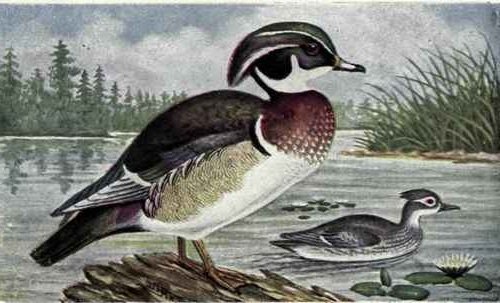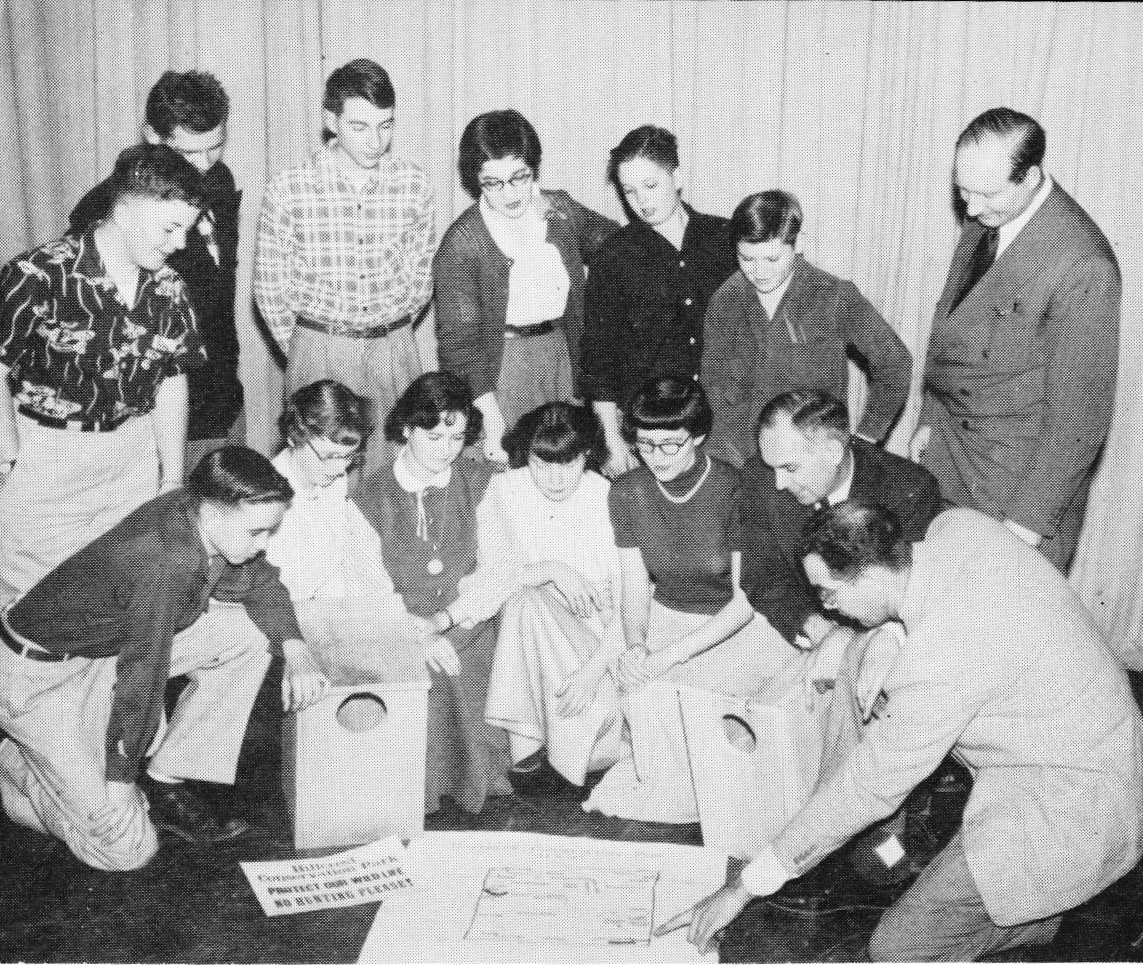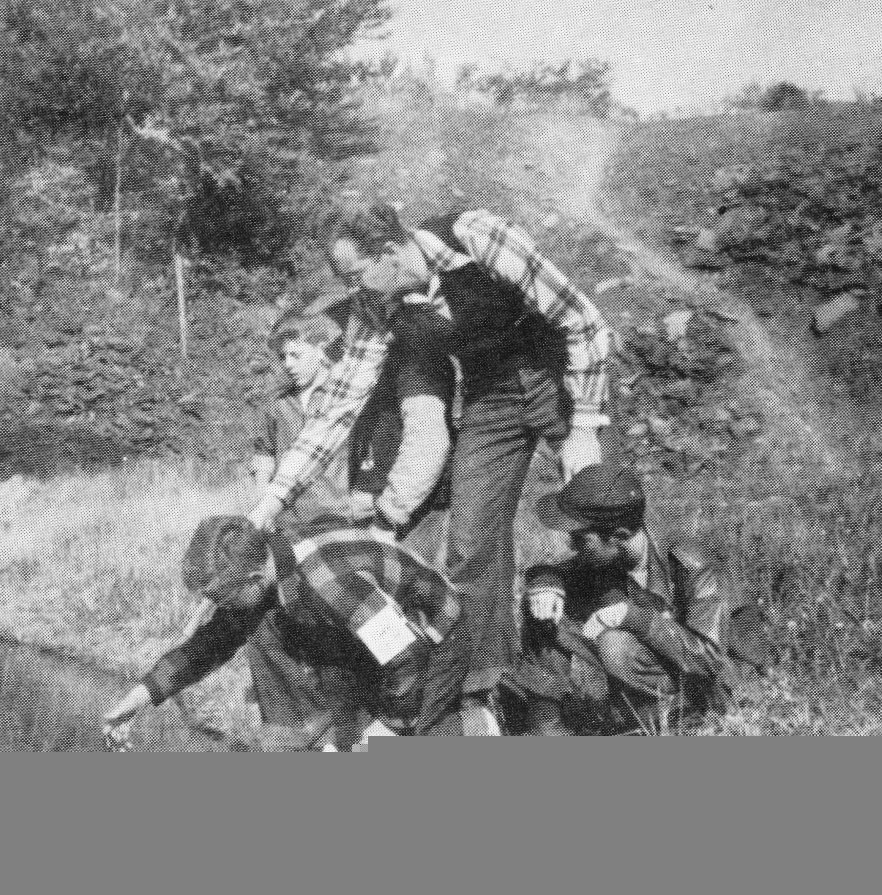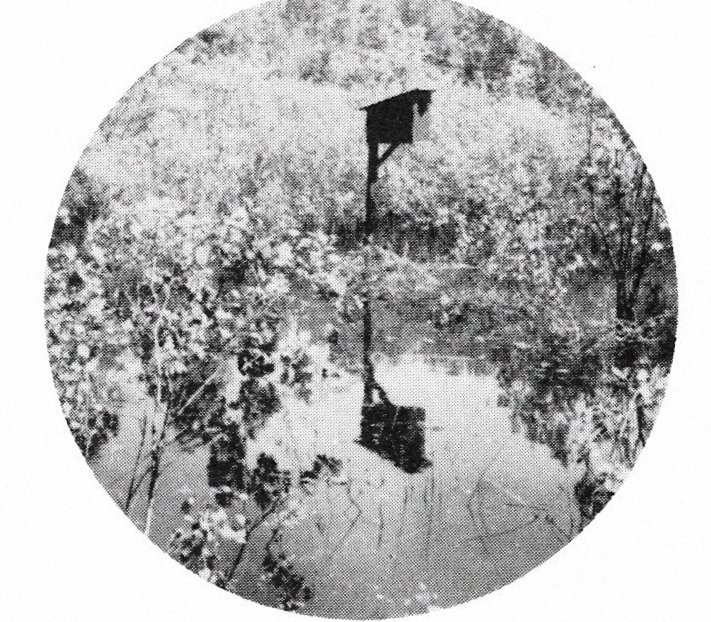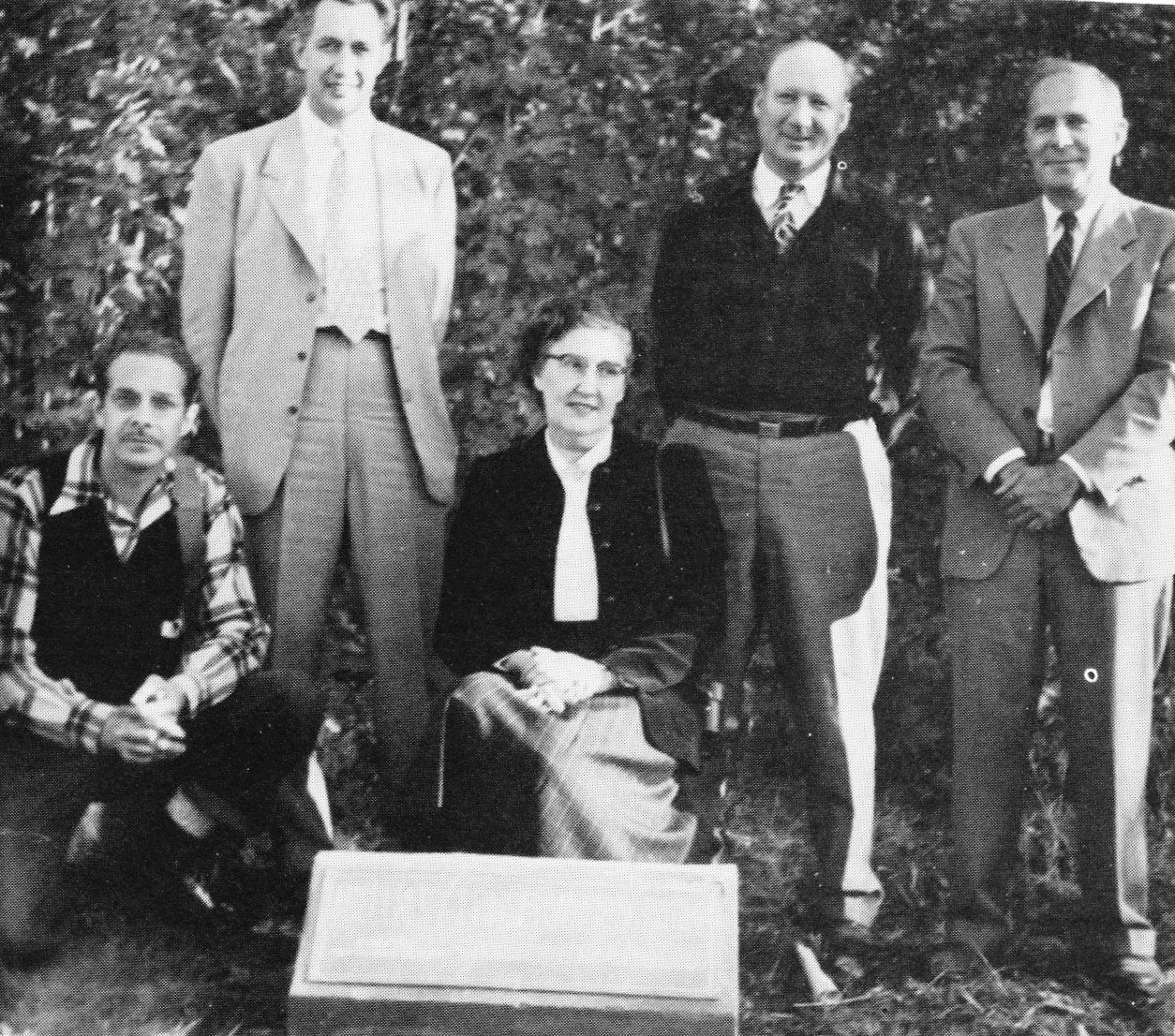Hillcrest reborn?
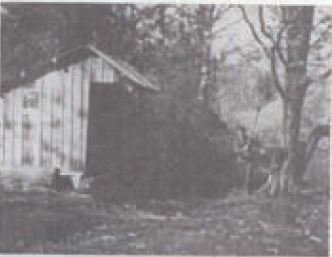
The Lean-to Gets A Spring Housecleaning
Clippings from an old Norwich High School
publication were
included along with Fr. Harry Winter's (NHS
'55) proposal to revitalize the
Hillcrest Conservation Park last August
What will it take to renew interest in
Hillcrest?
published in the Evening Sun, Oct. 7, 2010
Editor,
A few weeks ago, Father Harry Winter, a fellow classmate of mine from
Norwich Class of 1955, presented an editorial in The Evening Sun about the
lack of attention to Hillcrest Conservation Park. I had the opportunity to
accompany Father Winter, Harris Manwarren, and Don Windsor on a short field
trip to observe the current conditions of that area. It was a bit
distressing to note the deterioration that has occurred since it was started
back in the 1950s. This property which was deeded to the Norwich School
District back then has been sadly neglected. The work that went into this
project appears to have been all for nothing.
Pat Scott wrote a great article “Top of the Hill” that appeared in The
Evening Sun on Aug. 5 of this year. Thanks, Pat, for your support.
What will it take to renew interest in this worthy project and get some help
to restore it to its intended goal? It is my understanding that funds can be
made available for projects like this.
Please contact Board of Education members, teachers, politicians and friends
to get the ball rolling again. We need everyone’s support to make this
happen. For more information, visit
www.hillcrestenv.org.
Stan White
Norwich
|
Top o’ the Hill
By: Patricia F. Scott, Registered Historian
Published: August 5th, 2010

Seeding Trees Along the Muskrat Pond
A brief history of the Hillcrest Conservation Park
Located above the “stone quarry” is a parcel of land
that was developed as a learning tool for high school students over the
years and has largely been forgotten by many. Conversations with individuals
have resulted in the statements that they would like to have this park
project revitalized, both by the schools and perhaps private individuals and
organizations. On Sept. 24, 1953 through the successful efforts of both the
faculty and students of Norwich High School, the Hillcrest Conservation Park
was formally dedicated. On the above date Reverend William Crandall, a local
historian at that time, related stories of the early days of the area as at
one time the property was owned by his father, he having purchased it one
hundred years ago.
Students were lauded by Nick Drahos of
the New York State Conservation Department for their pioneer efforts in the
field of conservation education. At that time, he gave three reasons for why
conservation education was essential: prime motive for teaching of
conservation, jobs in numerous fields which depend directly on plentiful
natural resources and finally conservation is a large business ranking
second only to manufacturing. If one speaks to anyone in this 21st century
that is in that field, they will relate the still importance of these three
reasons.
At the dedication ceremony, the late
Stanford Gibson credited the success of the park’s establishment to the
Board of Education, the administration, and high school and grade faculties
with special thanks to E. Vail Sheldon, a long term educator in the Norwich
High School. The dedication ceremony climaxed in the unveiling of a monument
by the then-president of the Board of Education, Cyrus M. Higley.
The above early photos give the readers
of today an indication of the stamina, fortitude, and energy that the
students of that time put forth for this project. What mushroomed from a
dream was fulfilled with the establishment of Hillcrest Conservation Park in
1954. Originally scheduled for May as a culmination of three years of labor
by all involved, the dedication was canceled as Mother Nature decided that
wet, soggy ground was the menu for that day. This event was eventually
rescheduled for Sept. 28, 1954.
That date’s festivities were to include fly casting by Russell Hogue,
bait casting at the muskrat marsh by a Mr. George, wild animals took the
spotlight (rabbits, raccoons, turkeys, skunks, etc.). Additionally
explanations of poison ivy and poison oak were on tap. Mr. Gibson (then
rifle coach) and Gary Stewart gave a
demonstration of the proper use of firearms. Also, Everett Wells was
scheduled for an exhibition of outdoor archery demonstration. A special
event of this day would be an all weather camp exhibit; a demonstration of
the techniques of building a fir and the uses of
wood tools as well as all other outdoor equipment. A demonstration of
cutting trees with a chain saw and hand saw completed the first part of this
Conservation Day Program.
All work and no play makes for dull boys and girls and gaming
activities such as tree climbing, wood splits, bronco busting, three legged
races and a rolling pin toss were sure to attract many participants.
This first Conservation Day program was credited to Patricia Martin,
Mr. Gibson, John King, Mrs. Russell Tice, Vail Sheldon and students Harry
Winter, Luana Crawford and Joan Hewitt. All of these individuals worked long
and hard planning the day’s activities as a learning tool for all who
attended the festivities.
Returning to the beginning of the Park, the land was purchased by the
Board of Education in June of 1952 from John Mundy for $250. This same year,
roads to the park were cleared, trails in and around were marked and a few
game shelters erected. Continuing in 1952 would see the planting of trees
and shrubs as well as establishing a picnic area. Harry Winter was
responsible for
the establishment of Hillcrest Park Service, with the services of David
Meyers and Luana Crawford aiding in this newest endeavor of the park.
Continuing again to 1953, the Soil and Conservation Department stepped
in and constructed a muskrat marsh and with school funding a fish pond was
developed. Reforestation activities were continued and in October of 1953,
the park received official
dedication as related previously. Plans for the future development included
wood duck houses, toilet facilities, and reforestation
programs with the trees being harvested in 1958 and all proceeded to be
donated to the Student Loan Fund.
Through the ensuing years, Hillcrest Conservation Park still exists
with the School District still the proprietor. However activities have
become almost non-existent. With the many changes in the education system in
this state, conservation and agriculture have more or less taken a back
seat. In a conversation with the retired superintendent of schools Robert
Cleveland, this writer asked what had happened to the park. His memory
recalled that a resolution had been passed by the Board of Education to keep
the park “forever wild” and that would be the extent of their involvement
with the area.
In closing, I believe would be of great educational advantage if
renewed interest were to be stimulated in re-opening the park, maintaining
it as a place of learning and peaceful settings for all who visited.
|
|
Hillcrest Conservation
Park should be revitalized
Published in Evening Sun August 19, 2010
Editor,
Pat Scott’s article “Top o’the Hill: A brief
history of the Hillcrest Conservation Park,” in The Evening Sun, Thursday,
Aug. 5, 2010, certainly caught the attention of members of the Norwich High
School Class of 1955, as we began assembling for our 55th reunion, Aug.
13-15. Not only is Pat an esteemed member of the class, but her description
of what was accomplished in the 1950s, and plea for reopening the park,
struck a deep chord in many of those who gathered for our reunion.
On Thursday, Aug.
12, classmate Harris Manwarren arranged for Bullthistle Hiking Club member
Don Windsor to take classmates Stan White and myself to the old stone quarry
and Hillcrest Park. Don’s expertise in the flora of the area especially was
a joy.
We
relived again the days when teachers Lyman Anderson, E. Vail Shelden and
Stan Gibson made NY State education history by developing a curriculum and
program in conservation. They were ably coordinated by high school principal
Russell Hogue and superintendent Earl Soper.
But
what we have today on the original 55.876 acres is an ecological disaster.
We planted multiflora rose and honeysuckle as borders. The US Dept. of
Agriculture didn’t realize that both would spread into the fields, and take
over. We planted 2,000Christmas trees in the meadow, which were supposed to
be harvested in 6-8 years and the money given to the Student Loan Fund. The
trees are now 30 feet tall, and with the multiflora rose and honeysuckle,
have destroyed the 20 acres of meadow. The two lean-tos were early
vandalized, and the trails now blocked by multiflora rose, except for a few
ATV trails.
For
our reunion of Aug. 13-15, a 20 page article was developed to help
revitalize the park: “Hillcrest Conservation Park (and Stone Quarry?) – A
Proposal.” It includes documentation from the NHS yearbook Archive for
1952-58, accounts from the high school newspaper The Hi-Tribune, and most
importantly, the revival and renaming of the park in the early 1990s to
“Hillcrest Environmental Studies Center,” as explained in The Evening Sun,
April 15, 1991, p. 3.
There
are two immediate possibilities. First, the Norwich Board of Education can
realize that their goal to keep the park “forever wild” (Pat Scott’s
article) is certainly not the state the park is in now. It should at least
be restored to its 1950s condition, if not improved. Secondly, Rogers
Environmental Education Center could partnership with the Board of Education
and at least give tours of Hillcrest as an example of how not to keep a
place forever wild.
If
you have a chance to visit Steamtown, the National Historic Site run by the
National Park Service, Scranton, Pa., you will see what could happen to the
bluestone quarries of Norwich and Oxford. Since Chenango, Cortland and
Otsego counties are the upper tip of the federal Appalachian Region, there
is money available for such projects. Chenango County already has an
application to the Appalachian Regional Commission for child care. Hillcrest
for ecology and the stone quarry for jobs and tourism could develop side by
side.
Copies
of the 20-page “Proposal” have been left at Guernsey Memorial Library, Local
History Section, and Chenango County Historical Society Museum. Copies were
given to the members of the Class of 1955, and to members of other classes
of the same era.
One objection raised is that teens of today
are interested only in computers, and have to be pushed into the great
outdoors. That is certainly an issue which educators are dealing with.
The effort to
combat childhood obesity could result in the park being used for hiking,
organized treasure hunts, family picnics, and ecological education. The BP
Gulf tragedy means that ecology will be in the forefront of education.
During my time at the class
reunion, Lane Anderson loaned me his father’s MA thesis at Colgate
University (1951)
“A Study in Conservation Education through
The Rehabilitation of School Owned Idle Lands” (180pp). Lane also loaned me
the 20 page “For the Preservation and Observation of Wildlife, Hillcrest
Environmental Studies Center,” Sept. 1953, revised May, 1972. Both documents
are marvelous proofs of what can be done. The second document includes this
provocative statement: “I give my pledge as an American to save and
faithfully to defend from waste the natural resources of my country – its
soil, air and minerals, its forests, waters, and wildlife.”
Contact
your favorite school teacher, administrator, Board of Education member,
classmate and friends, to see if the park and quarry can be revitalized in
the spirit of the pledge. (Father) Harry Winter NHS 1955 St. Paul, Minn.
|
